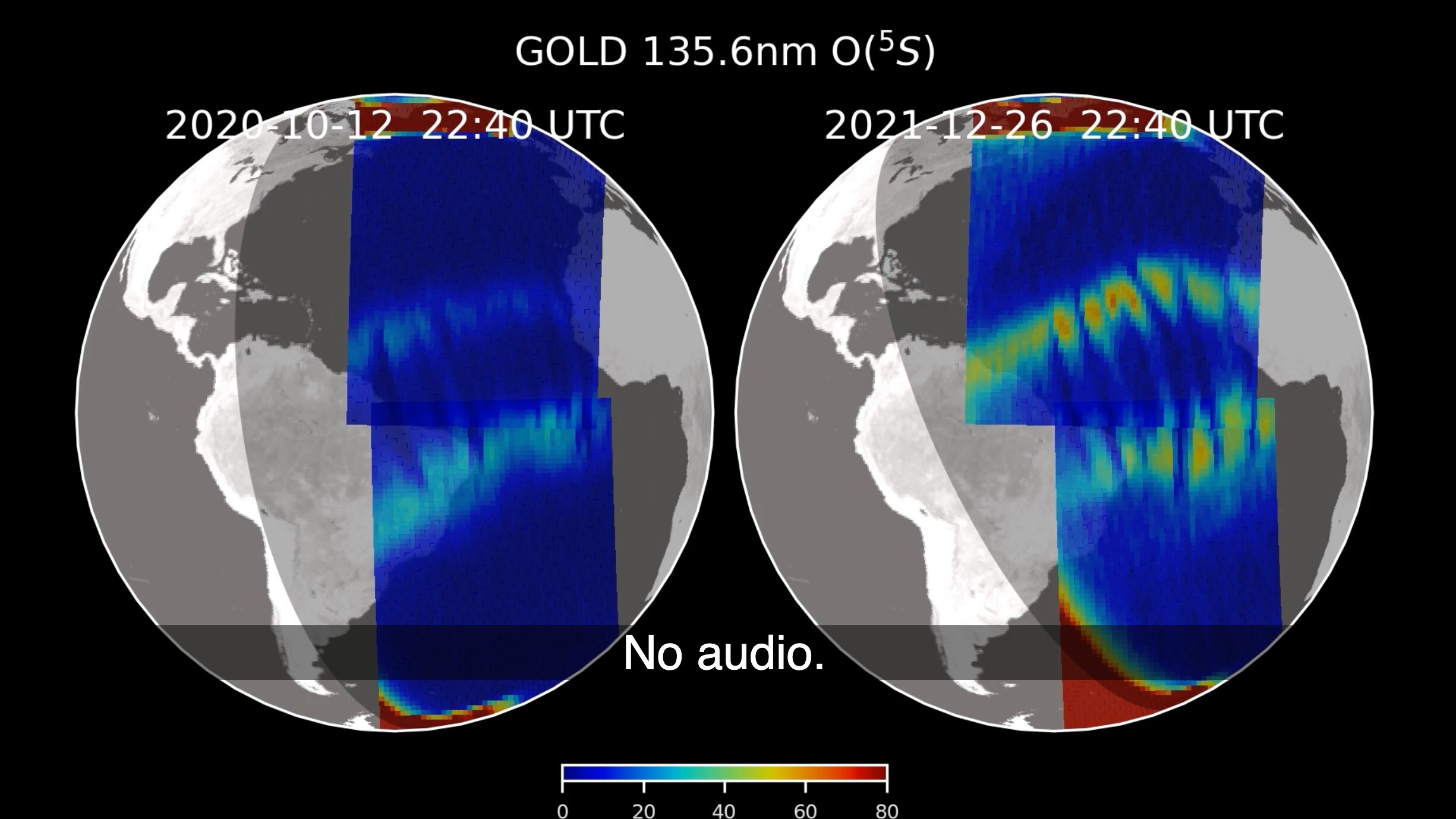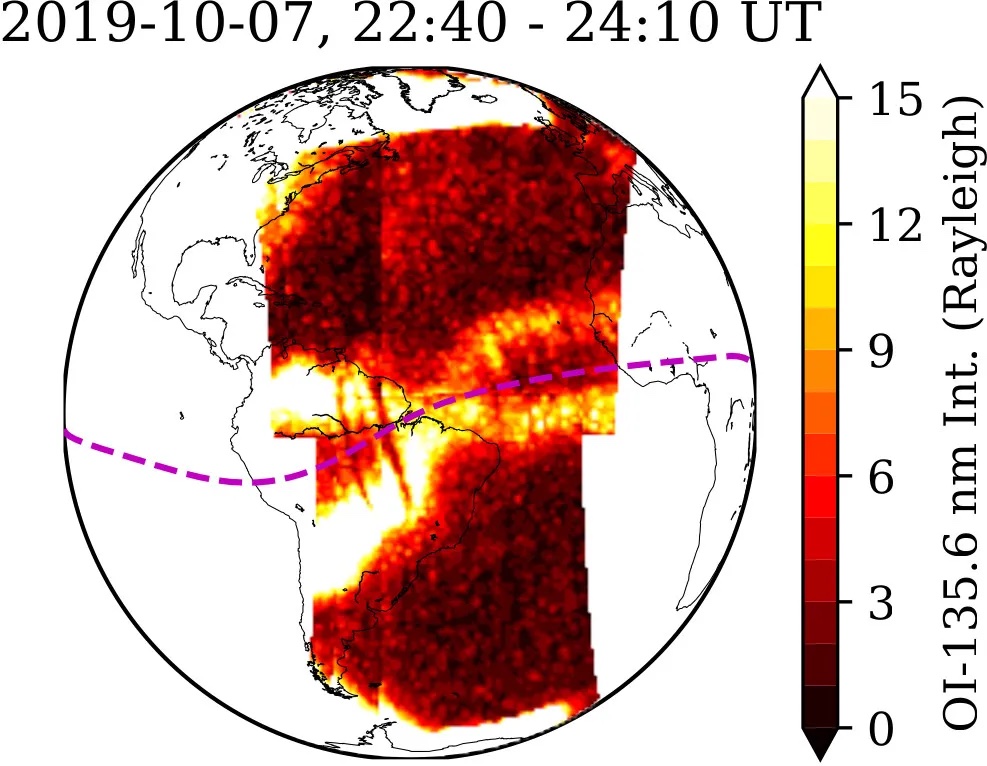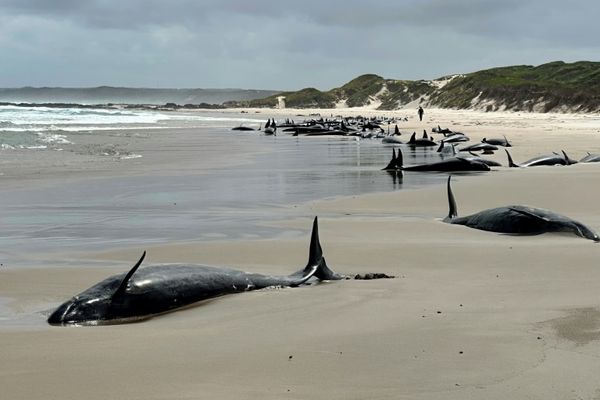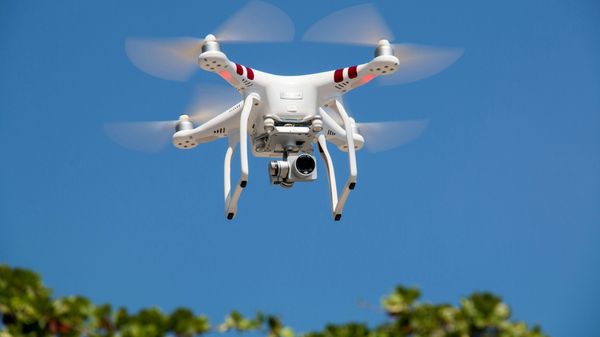
A NASA satellite has spotted unexpected X- and C-shaped structures in Earth’s ionosphere, the layer of electrified gas in the planet’s atmosphere that allows radio signals to travel over long distances.
The ionosphere is an electrified region of Earth's atmosphere that exists because radiation from the sun strikes the atmosphere. Its density increases during the day as its molecules become electrically charged. That's because sunlight causes electrons to break off of atoms and molecules, creating plasma that enables radio signals to travel over long distances. The ionosphere’s density then falls at night — and that's where GOLD comes in.
NASA's Global-scale Observations of the Limb and Disk (GOLD) mission is a geostationary satellite that has been measuring densities and temperatures in Earth's ionosphere since its launch in October 2018. From its geostationary orbit above the western hemisphere, GOLD was recently studying two dense crests of particles in the ionosphere, located north and south of the equator. As night falls, low-density bubbles appear within these crests that can interfere with radio and GPS signals. However, it's not just the wax and wane of sunshine that affects the ionosphere — the atmospheric layer is also sensitive to solar storms and huge volcanic eruptions, after which the crests can merge to form an X shape.
In its new observations, GOLD found some of these familiar X shapes in the ionosphere — even though there weren't any kinds of solar or volcanic disturbances to create them.
Related: Oops! US Space Force may have accidentally punched a hole in the upper atmosphere
"Earlier reports of merging were only during geomagnetically disturbed conditions," Fazlul Laskar, a research scientist at the University of Colorado's Laboratory for Atmospheric and Space Physics (LASP), said in a statement. Laskar is the lead author of a paper published in April in the Journal of Geophysical Research: Space Physics that described these unexpected observations.

"It is an unexpected feature during geomagnetic quiet conditions," he said.
This suggests that what happens in the lower atmosphere actually affects the ionosphere more than extreme solar or volcanic events.
In addition to the odd X's, GOLD also saw curved C-shaped bubbles appear in the plasma surprisingly close together. Scientists think they are shaped and orientated according to the direction of winds, but GOLD imaged C-shape and reverse-C-shaped bubbles as close as about 400 miles (643 kilometers) apart. To have wind patterns change so drastically over such short distances is quite unusual, according to the researchers.
"It's really important to find out why this is happening," LASP research scientist Deepak Karan, lead author of a separate paper published in November in the Journal of Geophysical Research: Space Physics, said in the statement. "If a vortex or a very strong shear in the plasma has happened, this will completely distort the plasma over that region. Signals will be lost completely with a strong disturbance like this."
This is not the first time NASA has sought to understand more about the ionosphere. Most recently, a project called Atmospheric Perturbations Around The Eclipse Path (APEP) investigated how a drop in sunlight and temperature affects Earth's upper atmosphere. During October 14's annular solar eclipse across the southwest U.S. and again during April 8's total solar eclipse across North America, NASA launched three suborbital sounding rockets into the eclipse path to measure changes in electric and magnetic fields, density and temperature within the ionosphere. The results of the mission are still forthcoming.







